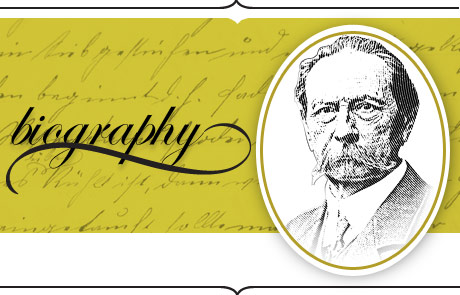Karl Benz
Karl Benz


In the nascent days of the automobile industry, when the typical horseless carriage really was an old buggy with an engine slapped on the back, the Benz Patent Motorwagen took things to the next level. First driven in 1885 by German mechanical engineer Karl Benz (1844-1929), this innovative vehicle was the first in the world designed and built stem to stern for mechanized transportation via an internal combustion engine.
Benz's auto boasted a tubular steel frame, electric coil ignition, rack and pinion steering, an evaporative cooling system, and differential rear-end gears. Its 1600-cc., ¾ horsepower engine topped out at 8 mph.
By virtue of his 1886 patent for the Motorwagen, Benz has a solid claim to the title of inventor of the first practical, commercially available, gasoline-powered automobile. His string of innovations in key automotive components burnished his legend. And despite a rocky start in business, the companies he formed set the industry standard for quality and engineering across Europe and inspired U.S. upstarts like the Duryea brothers, Ford, Studebaker, and Olds.
Benz was raised chiefly by his mother in Karlsruhe, Germany. His father, a locomotive driver, died in a train accident when Benz was two years old. The family was poor, but Benz's education was a priority and he excelled as a student. He was admitted to the University of Karlsruhe at age 15 and graduated in 1864 with his mechanical engineering degree.
Bicycles were coming of age in the late 1860s, and Benz was an avid rider and mechanic. It was while riding and tinkering that he first fantasized about a totally mechanized vehicle.
Following a succession of unsatisfying jobs with engineering and construction firms around Germany, Benz settled in Mannheim, where he partnered with August Ritter to open his first iron foundry and sheet-metal workshop. The business began to flounder early, but soon Benz would join forces with a new collaborator – his new wife, Bertha – who provided vital capital and a vision for success on par with his own.
Karl and Bertha set up housekeeping in 1872 and the first of their five children arrived a year later. Karl focused their factory's attention on the development of new and better engines, and he worked diligently to score new patents as a way to maximize their income. His inventions included a throttle system, battery-powered ignition systems, spark plugs, gear shifters, carburetors, the water radiator, and the clutch. By 1885, he was ready to put it all together in a fully gas-powered car. The Benz Patent Motorwagen's innovative features included a four-stroke engine, three wire-spoke wheels, and cozy two-passenger seating. The one critical thing missing, however, was a customer base.
Imagine a time when there was no such thing as a car commercial. When gasoline was a household cleanser sold only at the drug store. When even the best long-distance roads were rough, narrow tracks scratched out across the countryside. The public was far from sold on the need for, or practicality of, motorized transportation. Benz's car would change all that, but not without another critical boost from Bertha. Her natural-born marketing moxie literally put the car on the road to success.
It was Bertha who in 1888 illicitly appropriated a Motorwagen and drove 66 miles from Mannheim to Pforzheim to visit her mother. It was the first long-distance trip ever attempted in a horseless carriage. Her 8-mph exploits alarmed the citizenry, earning priceless publicity. She informed her husband of her safe arrival by telegram, returning home the next day.
Along with the PR impact, Bertha's sensational journey identified several refinements to make the car safer and more powerful, including brake linings and the idea of an extra gear for climbing hills. Benz began selling cars that summer, and his model 3 Motorwagen was a star of the 1889 World's Fair in Paris. Today Bertha's famous road trip is celebrated every two years with an antique car rally along the same stretch of highway.
Through a succession of companies launched during the early 1900s, Benz remained the leading automobile producer in Europe for decades. Innovations in racing car design, automobile mass production, and novel engine design continued under Benz's leadership during this period.
By the early 1920s, Germany's crumbling economy and heated competition between Benz and the Stuttgardt-based Daimler – the maker of the Mercedes engine – resulted in a merger deal. The Daimler-Benz company was formed in 1926, and the Mercedes-Benz model naming conventions that exist today were first introduced.
Karl Benz died in April 1929, and Bertha followed in 1944. Their respective contributions to the history of the automobile mirror the vital relationship between innovation and marketing that continues to drive the industry today.
Michael MacRae is an independent writer.
Benz's auto boasted a tubular steel frame, electric coil ignition, rack and pinion steering, an evaporative cooling system, and differential rear-end gears. Its…engine topped out at 8 mph.



